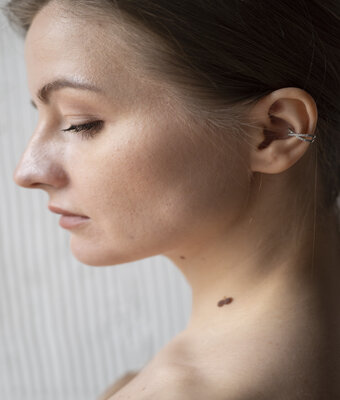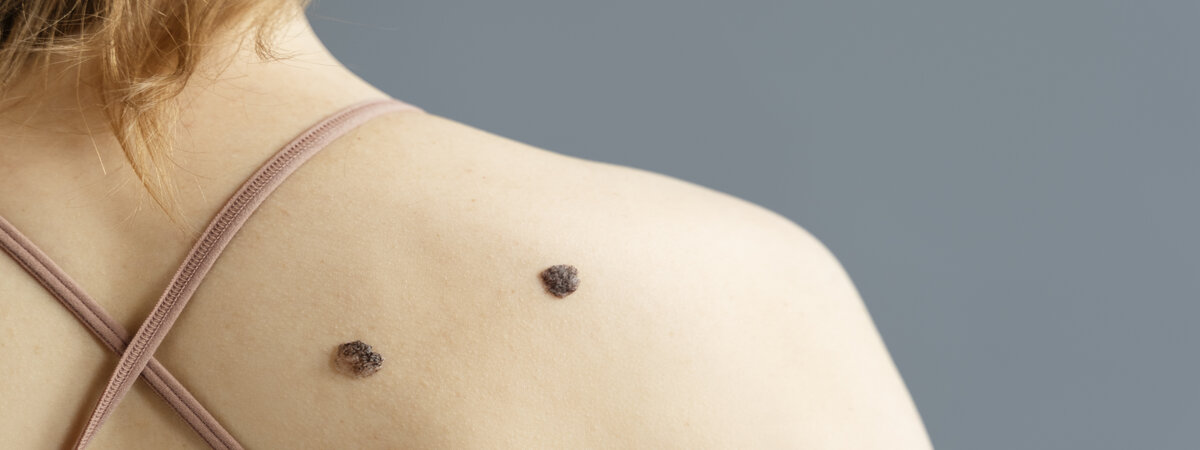
The Consequences of Accidentally Scratching Off a Mole
We all have moles, and they can pop up anywhere on our skin. Most of the time, they’re totally harmless, but every now and then, a mole can be a sign of something more serious. Maybe you’ve scratched one off, or it got bumped and started to bleed. It might seem like no big deal, but there are reasons why it’s important to look after your moles. In this post, we’ll talk about why you should care for them, why you shouldn’t scratch them off, and when it’s time to reach out to a dermatologist.
What Exactly Are Moles?
It might seem like no big deal if you scratch off a mole, but there are a few reasons why it’s best to avoid doing so. First, scratching can cause the mole to bleed, leaving your skin exposed. That open wound makes it easier for infections to set in. Even more important, scratching a mole could alter its shape, making it more difficult for a doctor to assess it if you’re concerned. Plus, it might heal in a way that complicates future treatments.
When to See a Dermatologist
If you’ve noticed that a mole is changing—whether it’s getting bigger, changing color, or if it’s itchy, bleeding, or painful—it’s time to get it checked by a dermatologist. While most moles are completely harmless, any changes could signal that something needs attention. Dermatologists are trained to tell the difference between benign moles and ones that may be at risk. If needed, a biopsy might be done to rule out anything serious.
How Moles Are Safely Removed
If you’re considering having a mole removed, it’s important to have it done by a professional. Scratching it off on your own is never a safe option. Dermatologists have several safe methods for removing moles, depending on their size, type, and location. Some options include:
-
Surgical Removal: For larger or more suspicious moles, surgical removal is often the best option. The mole and some surrounding tissue are carefully removed. The area might be stitched up, or it may heal on its own, depending on the size.
-
Shave Excision: For smaller, non-cancerous moles, shave excision is a quick, effective method. Using a small scalpel, the mole is shaved off the surface of the skin. No stitches are needed, and recovery time is usually quick.
-
Laser Treatment: For smaller, non-cancerous moles, laser treatment is a great option. A laser targets the pigment in the mole, gradually causing it to fade. It’s a non-invasive procedure, though it might take a few sessions for the mole to fully disappear.
Final Thoughts
Moles are common, but it’s important to monitor them for any changes. If you’ve noticed any differences or if you’ve accidentally scratched one off, don’t hesitate to consult our dermatologists. Early detection can make all the difference in your skin health.
If you’re not sure what’s best for your skin, our team of board-certified dermatologists is here to help. Book a consultation today to get personalized advice and care for your moles and skin.
FAQ
What is a Mole Check with a dermatologist?
A Mole Check with our dermatologist involves a thorough examination of your skin to assess the condition of your moles. Our experts analyze mole characteristics, such as size, color, and shape, to determine their health status and identify any potential risks. This evaluation aids in early detection of any abnormalities or changes that might require further attention.
Are all moles a cause for concern?
No, the majority of moles are benign and pose no immediate health risks. However, certain types of moles have the potential to transform into skin cancer over time. It’s important to be aware of any changes in your moles, such as shifts in color, size, or shape, and to consult our dermatologist if you notice any unusual developments.
Can moles with hair be cancerous?
While the presence of hair on a mole is not an indicator of malignancy itself, any changes in a mole’s appearance, including those with hair, should be monitored closely. If you notice alterations like bleeding, itching, or changes in color, size, or shape, it’s advisable to seek professional guidance for a comprehensive evaluation.
Is mole removal always necessary?
Mole removal isn’t always necessary, especially if the mole is benign and not causing discomfort. However, in cases where moles change in appearance, cause irritation, or have the potential for malignancy, our dermatologist may recommend removal to ensure your health and well-being.


